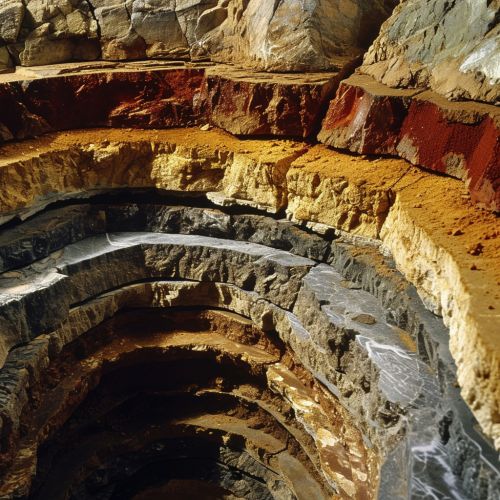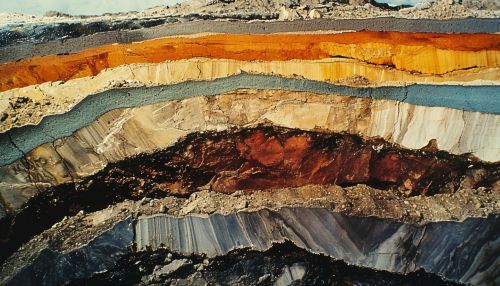Tectonic plate
Introduction
Tectonic plates are large pieces of the Earth's lithosphere that fit together to form the planet's surface. These plates are constantly moving, albeit very slowly, due to the convective forces in the underlying asthenosphere. The study of these plates and their movement is known as plate tectonics, a field that has revolutionized the understanding of Earth's geological history and the processes that shape its surface.
Composition and Structure
Tectonic plates are composed of two types of lithosphere: oceanic and continental. Oceanic lithosphere is denser and thinner, composed primarily of basalt and gabbro. In contrast, continental lithosphere is thicker and less dense, composed mainly of granite and andesite. The boundary between the lithosphere and the asthenosphere is known as the Mohorovičić discontinuity, or Moho.


Plate Boundaries
There are three types of plate boundaries: divergent, convergent, and transform. At divergent boundaries, plates move apart from each other, creating space for new lithosphere to form. This is where seafloor spreading occurs. At convergent boundaries, plates move towards each other, causing one plate to subduct beneath the other, forming deep oceanic trenches and potentially leading to volcanic activity. At transform boundaries, plates slide past each other horizontally, leading to intense seismic activity.
Plate Tectonics and Geological Activity
The movement of tectonic plates is responsible for most of the Earth's geological activity, including earthquakes, volcanoes, and mountain building. Earthquakes occur when the stress accumulated at plate boundaries is released in the form of seismic waves. Volcanoes form when magma from the asthenosphere reaches the surface, which often occurs at convergent and divergent boundaries. Mountain building, or orogeny, occurs primarily at convergent boundaries where continental lithosphere is involved.
Plate Tectonics and Earth's History
The movement of tectonic plates over geologic time has dramatically reshaped the Earth's surface. This process, known as continental drift, was first proposed by Alfred Wegener in the early 20th century. The supercontinent Pangaea, which existed around 300 million years ago, is one of the most well-known examples of continental drift. The breakup of Pangaea led to the formation of the current continents and ocean basins.
